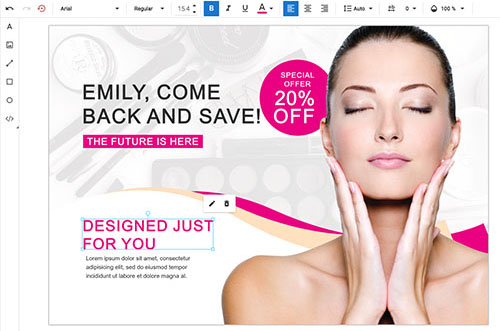For the past few months, our focus at AutoAnything.com has been on Q4 and more specifically on that period of time between Black Friday and Cyber Monday.
What is the right combination of promotions, marketing campaigns, and strategies that will maximize our profits during this critical time?
In my 20 years in ecommerce, the biggest problem with the holidays is that they tend to be unprofitable for most retailers.
Yeah, I said unprofitable.
Take Karmaloop.com. The online streetwear retailer increased revenue during those 96 hours every year from 2010-2014!
Nice!
Do you know what happened in 2015? The company went bankrupt because each of those periods was cash-flow negative!
Dang!
(Incidentally, this was great for me as I was part of a team that was able to pick it up cheap in 2015, but bad for the business.)
You see, increasing revenue is BS if every year you increase discounts more.
The holiday reality: max revenue and minimum profits
Twenty years of ecommerce Black Friday / Cyber Monday data have taught us four things:
- The more we (retailers) hype up Black Friday thru Cyber Monday, the more we train customers to shop during those four days. And, no surprise, each season those four days are bigger than the previous year’s!
- Despite this revenue surge, for most retailers the 96-hour frenzy doesn’t increase overall Q4 revenue. Read that sentence again: BF/CM just cannibalizes the rest of Q4. Congratulations, your customers are going to sit on their wallets until this one week. We’ve trained the US consumer to do this. (BTW this is Oh Crap Moment #1.)
- Because the 96-hour period is all about discounts, most retailers are therefore cannibalizing full-margin purchases with discounted ones. This should scare you. (Oh Crap Moment #2.)
- And the icing on the cake: customer acquisition costs go through the roof as big brands plow ad budgets into paid ads driving up the bid. (Oh Crap Moment #3.)
Let’s look at this another way. Readers of Nerd Marketing all know and love this equation:
CLV > CAC = $$$
If your total profits off a customer (CLV) exceed the cost to acquire that customer (CAC), you win.
Sherlock
But “Black Friday / Cyber Monday marketing” tends to decrease the CLVs (because of the epic discounting) and increase the CACs (because of the epic competition driving up ad costs).
And lots of retailers, therefore, lose money.
That was the reality at Karmaloop, and it could be your reality too.
Three strategies that beat the system
How do you tap the epic shopping traffic surge over the holidays and yet still maximize profits?
I’ve got a few strategies that have worked for me. Strategies that we use at AutoAnything. And strategies that other smart direct brands use to drive profits.
Here are three strategies to help you buck these macro trends and maximize your profitability.
Strategy #1: Don’t discount (as much)
Yes, you need to capture customer attention over BF/CM, but smarter retailers (Apple, for example) get creative and offer up less “margin-depleting” hooks than a discount.
What might these hooks be?
Here’s one: a “free gift with purchase” promotion.
At Karmaloop we offered up some free t-shirts (cost $5) with the purchase of certain complementary and proprietary fashion products priced $250 and up on BF/CM.
Yes, sending the additional t-shirts decreased our margin. But nowhere near as much as an industry-standard “Doorbuster 25% Blowout Discount!” would have.
And after tracking this promo, we noticed that our conversion rates on these offers didn’t really decrease due to this promotion vs. a straight-up discount. IOW we netted out positive.
There are a many possibilities for hooks like this—too many to plunk in this post in fact. So plunk your email below, and I’ll send you a nice tear sheet breaking down ten of the most promising non-discount hooks I’ve seen:
These ten are just starting points. The more you can get away from discounts, the more you will ensure profitable BF/CM orders when your competition is diving into the hyper-discounting dumpster fire.
Strategy #2: Spend at the point of biggest impact
I’ve mentioned before that you should be measuring the ROMI on each marketing campaign. That’s the number one way to tell if each one is generating profits.
But what’s better than measuring current campaigns? Measuring the latency of {ad click} to {conversion} for your 2018 holiday purchases.
Say-wha?
Here’s the idea: you know customers bought on BF/CM last year, but when did you acquire those customers? Odds are it’s not on the same day they purchased. When you look back to last year, you may learn that you acquired most of your BF/CM customers weeks or even months prior to their purchase.
THAT’S when you should spend up on acquisition, NOT on the same day the purchase is happening.
Paid ads will be cheaper then. CPA drops, profits increase.
Any good paid ads person or agency should be able to do this for you. At AutoAnything, we use a tool called SuperMetrics to import snapshots of our Adwords data. Using that we can tell that most of our 2018 BF/CM purchases came from customers acquired in mid-October into November that year.
So that’s when we push paid ads, when costs are lower, and not on BF/CM.
Strategy #3: Work your owned audiences hard
So if we push paid ads before BF/CM, what do we push on BF/CM?
The magic of “owned audiences”
This is a no-brainer: your “owned audiences.”
Owned audiences are your own captive audiences. Audiences that that don’t live elsewhere, like on Facebook or Google.
Because you “own” them, these audiences are cheaper to communicate with.
Your biggest “owned audiences” are 1) your email subscriber list and 2) your existing customer list. If you want to market holiday offers, start with these two first before you pay Facebook for the privilege of marketing to their audience. Here’s how:
Because you own them, these audiences are cheaper to communicate with.
So if you want to market your holiday offers, start with these two first before you pay Facebook for the privilege of marketing to its audience.
Here’s how:
- Your subscriber list. It costs you close to nothing to send an email, so make sure all your BF/CM offers are created, scheduled and ready for the next 60 days. Email should not be an afterthought.
- Your customer list. You do know that you have customers that are not on your email list and/or don’t open emails, right? You actually often have more of them than customers that are subscribed and opening emails. It’s cheap to contact them too, and most retailers foolishly ignore them. How? Direct mail. Good old fashioned postcards. Free? No. But the price of postage is capped. These days it’s less than the cost of an online ad. Plus postage rates don’t increase when competitors bid up ad rates.
Remember, profits come when CLV (customer lifetime value) > CAC (cost of acquiring the customer). Marketing to your own owned audience *drastically* reduces that CAC part of the equation.
I recommend spending an afternoon putting these strategies together to nail your holiday marketing.
This week: Try out my app PostPilot
Today I want to introduce you to an app that will help your BF/CM marketing: PostPilot.com.
Whereas email software helps you target your subscriber lists, PostPilot helps you target your customer list.
You add it to your Shopify store. It pulls in your customer data. You design a simple card and tell it to send. Done.

You can even automate the sending based on customer behavior triggers. Think of it as Klaviyo but for postcard marketing.
Postcard marketing is a low-cost channel to use over the holidays. It also has higher conversion rates than a typical FB ad.
I don’t do a lot of selling on this site, but I believe in this product AND I think it’s an ideal time to get a leg up on the competition over the holidays.
Target owned audiences. Make more profits.
How to start with holiday postcard marketing
These two postcard campaigns should work for any of you:
- A one-off holiday campaign. Schedule your cards to arrive in mailboxes over the BF/CM timeframe … or earlier to get a jump on the competition. Send them to every customer who ordered in the past year. Send them your core holiday offers. Or simply introduce some new products.
- A second purchase campaign. Build a simple segment of anyone who made one purchase, and suggest a logical related product. Send that postcard 30 days after the first purchase. This is an automated campaign (i.e., it will continue to send over time). And in our experience it is ROI positive 99% of the time.
For any of these campaigns PostPilot will track ROI right in the app.
Sign up today here –> PostPilot.com
Not on Shopify? Not a problem: you can import customer lists directly into the app.
Let us do it for you
If you want help getting started with PostPilot, we have short videos that walk you though how to set some simple campaigns.
Still stuck? We have a “done-for-you” program here … just give us some data about your store and we will set up your first campaign at our expense. No need to deal with design or targeting—couldn’t be easier to get started!
Again I never suggest solutions I don’t personally use and find to be valuable. So I encourage you to check out PostPilot. Mention “Nerd Marketing” and you’ll get 15% off your first send. The cards will make it by the holiday rush. Add in some smart marketing you’ll drive more profits over the next few months.
Comment with any questions about holiday marketing or PostPilot!
-Drew
